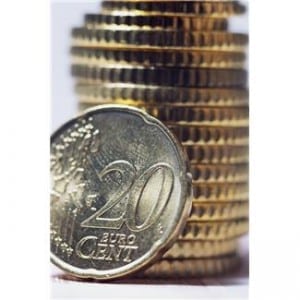 One of the biggest marketing mistakes accountants can make is that of having the wrong pricing. This is one of those areas that we all know about, and most of us can probably even talk about the concept fairly well, but it’s still so easy to make the classic mistakes.
One of the biggest marketing mistakes accountants can make is that of having the wrong pricing. This is one of those areas that we all know about, and most of us can probably even talk about the concept fairly well, but it’s still so easy to make the classic mistakes.
Here are some of the top mistakes made in regards to pricing. Have a look through them and see if you’re making one of these – and if you are, it’s time to address it!
You don’t know what your prices should be. This is primarily the result of not understanding what your true costs are – not just the costs of your team, or direct costs, but the cost of your time and how much effort goes into the delivery of your accounting services. Your first step is to analyse your work in progress and your own management accounts regularly. You’re constantly telling your clients to do it, but are you doing the same? As you know, many companies don’t do this because they’re afraid of what they’ll find. Some accounting firm partners discover that they’re only making about £5 an hour, and you wonder if you would be ‘better off’ working at McDonald’s. Of course you probably wouldn’t be better off in terms of what you want to do in life and what you’d like to achieve, but that’s one of the reasons we don’t analyse. But the only way you can change things and begin using the proper pricing is if you analyse where you’re at now, so you can see what needs to happen next.
You know what your prices should be, but you don’t charge them. Some of the reasons for this are:
Fear. You’re afraid that if you charge what you’re worth, you won’t get any new business (or you’ll lose clients). The truth is, people want to know what your products and services are worth, and they want YOU to know, as well. There are thousands of stories about businesses who increased their prices and got more profitability as a result. Like a seafood restaurant who increased their plate price from $6 to $14, and suddenly had so much business they were turning customers away. They hadn’t realised that people associate ‘expensive’ with ‘quality’. It’s the same with many other professional services. Make sure you go back to what your prices ought to be, and consider the kind of business you are. (If you’re a one-man accounting firm, you probably shouldn’t be charging at the Price Waterhouse level. But what should you be charging?)
Habit. Perhaps you set your prices when you started your firm, or they were set for you, and you haven’t changed them since. (Chances are you set your prices fairly haphazardly – you simply picked a number that sounded good.) Again, go back to the beginning. If you were starting your business again, knowing everything you know now, what would you charge?
You let your customers drive pricing. Many accountancy firms allow their clients or prospective clients to do the price-setting. They say, “It will cost £1,500”, and the prospect says, “Oh, I only had a budget of £750.” If you cave in and go with that price, then you’ll never get your client to understand value again. But if your response is, “Okay, let’s see what we can cut out to get to £750,” they understand how you’re genuinely trying to help them. There’s nothing wrong with being flexible, or even offering discounts: but make the discount clear. If you’ve decided to offer a £1,500 service for £750, explain this and demonstrate it, and show that you have given a £750 discount for whatever reason you’ve decided.
Lack of confidence in your product or service. This is a massive one – many accountants (and other business owners) actually don’t understand how valuable their services are. We are all our worst critic, and we listen to the inner critique much more quickly than we listen to praise. We can have a hundred clients tell us we are amazing, talented experts, and we brush it off and hope that it’s true, but when one person says they’re disappointed and it wasn’t what they thought at all, we believe every word of it, and are convinced that we are (or our product is) not worth very much. And we price accordingly. Have an honest look at your customers’ responses to the work you do. If they all think it’s ‘just okay’, maybe you do have some work ahead of you. But if they give rave reviews, not just to you but to others, you probably are better than you think.
You set the right prices, but you will discount them at the drop of a hat. This is called ‘mixed messages’ , and it confuses your prospective customers. If your standard price for a particular service is £1,000, but this person gets it for £500 and that person gets it for £750, no one knows what the value is, and so they give up and go with someone consistent. Have a clear discounting table, and use it regularly, and with good reason.
You keep your prices extremely low. This only works for those who have a clear, organised strategy, along with the structure and team to carry it out. Walmart and Ryanair are examples of companies who have competed on cost – and it’s a tough, cut-throat market if you’re going that route. You can do it, but it’s massively difficult to build loyalty.
You use ‘manipulations’ to drive people to your business (discounts, offers, specials, deals) – we’ll talk about this more next week. These do work, but there’s a further cost to you and your business that you may not realise.
So take a good hard look at your pricing. And if you’re making one or more of the above mistakes, it’s time to make a change.

